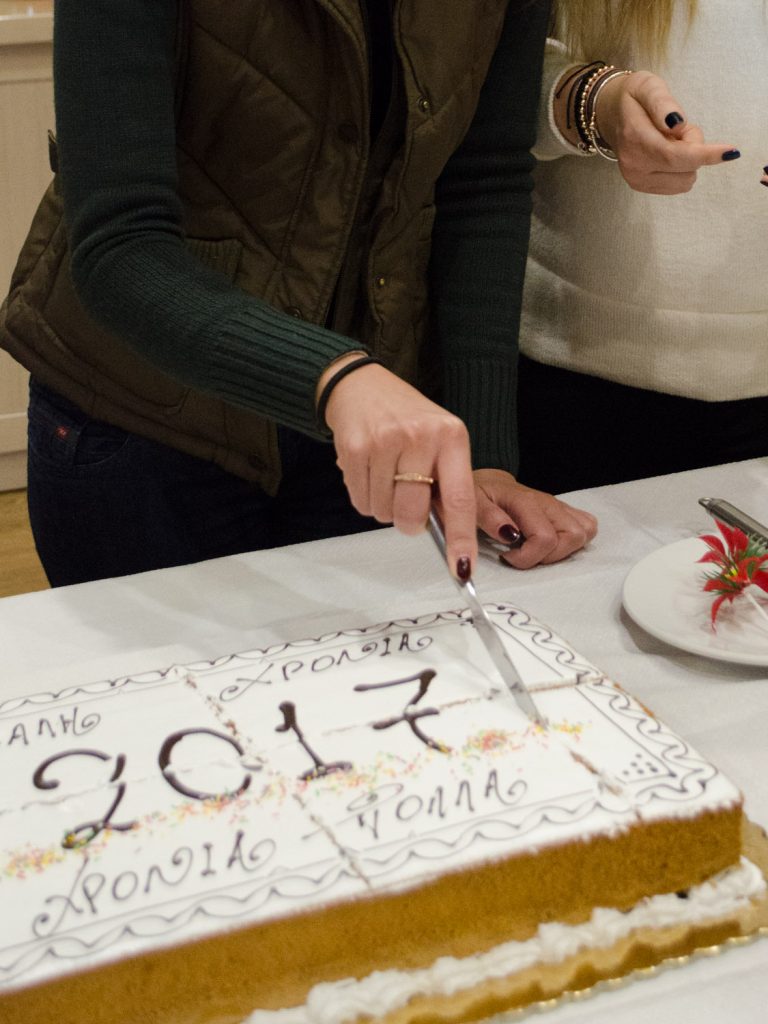New Year’s Day in Greece is special. Besides celebrating the arrival of the new year, it’s the time to cut a very special cake called the vasilopita. It’s a tradition that dates back thousands of years.
The Greek New Year’s Cake
One of the most interesting Greek food culture traditions is the cutting of the vasilopita. This is a sweet cake with a bread-like texture that is made especially for New Year’s. Visit any bakery or sweet shop and you’ll find many on display. As for the recipe, that differs from region to region. In general, the recipe consists of flour, eggs, butter, and sugar and a dusting of confectioners’ sugar on the top of the cake.
For every vasilopita, there are two things that are the same. Each one has the new year date written on top of the cake. Baked inside is a small foil-wrapped coin that was placed inside the dough before it was baked.
Cutting the Vasilopita
Greek families cut the vasilopita at some point during New Year’s Day. In fact, many do so after the clock strikes midnight.
The person who cuts it is usually the head of the household and he/she cuts the sign of the cross three times on the cake. This is said to bring luck and blessings to the home.
Then, the slices are symbolically served in a certain order: one slice is set aside for the house, for Christ, the Virgin Mary and then Saint Basil or Agios Vasileios. Then, every family member and guest receives a slice, with the recipients lining up from oldest to youngest.
The fun part of the tradition is that whoever gets the coin in their slice will have good luck for the rest of the year.
The cake is not only served in Greek households, but also in organizations and at businesses. Vasilopita events are also a popular fundraiser, where people pay for a piece of cake to benefit a charity.
History of Vasilopita
This special cake is traced back to ancient times during the Kronia Festival which was the liveliest time of the year. During the festival, business was suspended. Slaves were given temporary freedom to say and do what they liked. Moral restrictions were eased. This particular festival was connected to a legend of Saint Basil. During festivities, Saint Basil asked for his fellow citizens to raise money for protection of the city against a siege. Each citizen gave what they could in the form of coins or jewellery. When the ransom was handed to the siege, those who organized the siege were so impressed and touched by the collective generosity, the siege was cancelled.

Saint Basil wanted to return the coins and jewellery back to his fellow citizens but couldn’t figure out how at first. To solve this problem, he baked the coins and jewellery into bread and then distributed it all back that way.
Saint Basil or Agios Vasilios is the saint this special cake is named after. The tradition has evolved since, but the cake serves as a reminder of what Saint Basil’s place was in Greek history.
The Greek New Year’s Cake
As you can see, the vasilopita is a special food culture tradition that has evolved over thousands of years. Do you have a favorite New Year’s tradition?




